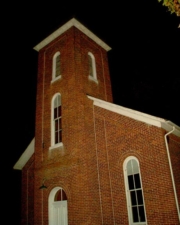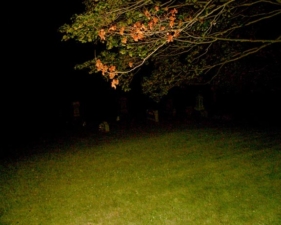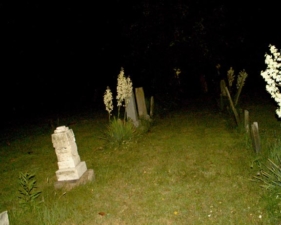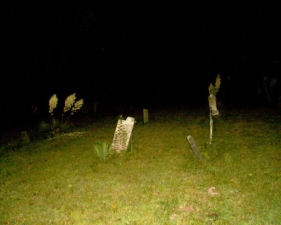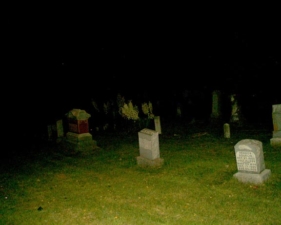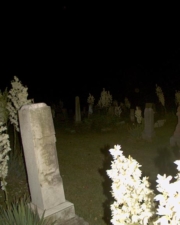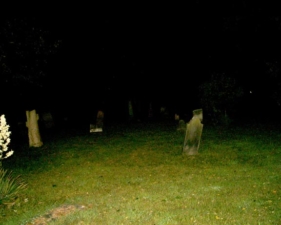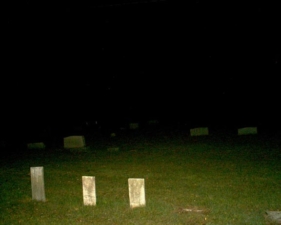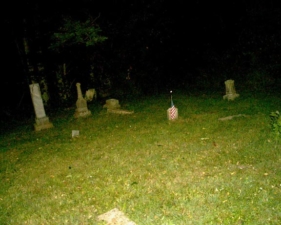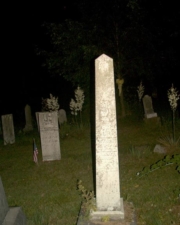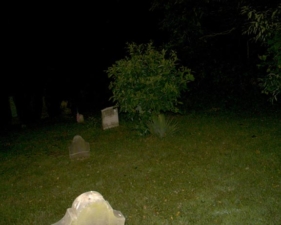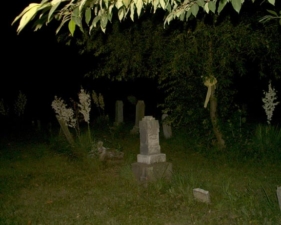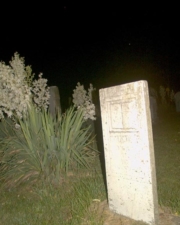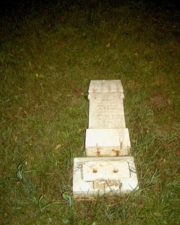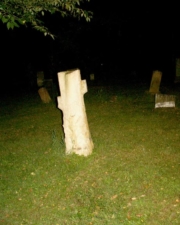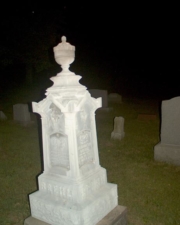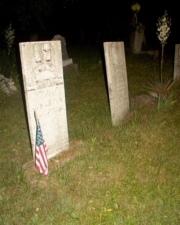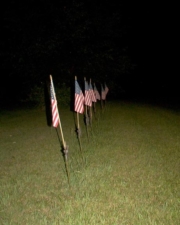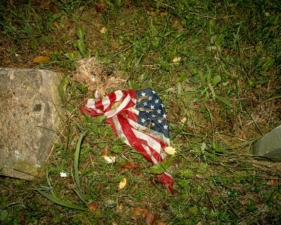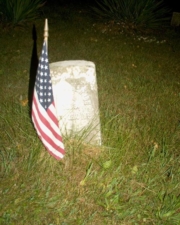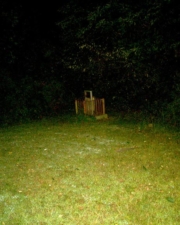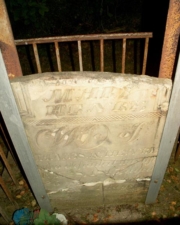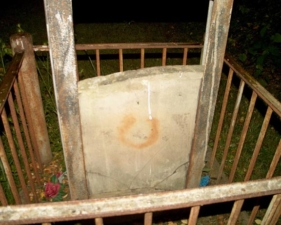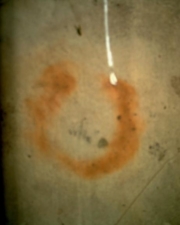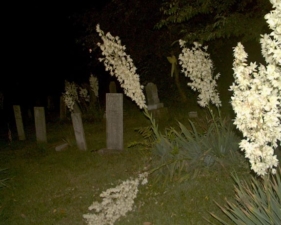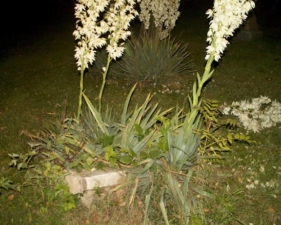The OES visited Otterbein Cemetery on July 4, 2003. The cemetery is located near Somerset in Perry County and is home to the infamous Horseshoe Grave. Based on the dates on tombstones, the cemetery was likely established in the 1830s or 1840s and was still actively being used at the time of our visit. There were many veterans from various wars buried within the cemetery grounds. A brick church next to the cemetery was built in 1882 and serves as the third building for the congregation, the oldest United Brethren church in the county. The first building was a primitive place of worship built in 1818. A brick structure was built in 1820 and served as the congregation’s home until the present church was built in 1882. Services were still being held at the church when we visited.
The Horseshoe Grave is what Otterbein Cemetery is most known for. As the story goes, two women, Mary Angle and Rachel Hodge, wanted to marry a man named James Henry. James rode out on his horse one night to decide which woman he wanted to marry, but soon fell asleep. When James awoke, he found himself at Mary’s house. James took this as a sign and married Mary soon after; Rachel served as a bridesmaid. Mary became pregnant, but sadly died during childbirth on February 28, 1845. The baby was stillborn. Mary was buried in a corner plot at Otterbein Cemetery. Three years passed and James decided to marry Rachel Hodge. The wedding took place on December 7, 1848. Rachel wore a black dress at the wedding and the two visited Mary’s grave after the ceremony. A cold winter wind drove the two back to their carriage.
A week after the wedding, the cemetery’s caretaker reported to James and Rachel that strange noises were coming from the cemetery at night and he had seen a ball of light near Mary’s plot. When the caretaker visited Mary’s grave, he discovered a sharply defined horseshoe had appeared on her tombstone. The next morning, James went out to the barn to do his daily chores. James was gone for longer than usual, so Rachel went to the barn to check on him. She found James dead in the horse’s stall with the imprint of a horseshoe on his forehead. The imprint is said to have been identical to the horseshoe mark that appeared on Mary’s tombstone, which could not be scrubbed off. Locals said the current tombstone is a replacement for the original tombstone and that the horseshoe appeared on the current stone only days after it was erected. It is said that during the night, one can sometimes hear the pounding of horse hooves coming down the road toward the cemetery. Reports of mysterious balls of light and eerie sounds still plague the cemetery.
The only sound we heard on the night we visited the cemetery was the neighbor’s dog barking continuously. We attempted to record for electronic voice phenomenon at the cemetery, but we did not record anything unusual. High electromagnetic fields were detected near Mary Henry’s tombstone, as well as a few others. An odd occurrence did take place while we were there. On the way back to our vehicle, we discovered that a plant had been pressed down to the ground, like someone stepped on it and broke it. Only minutes before we had been in this exact location and the plant was perfectly fine. Maybe the horse’s spirit came waltzing past and bent the plant to the ground.
NOTE: We returned to the cemetery in 2005 and found several new no trespassing signs posted and security cameras installed to watch over the grounds. While daytime visits should be fine, night time trips are discouraged.
Location Information: Active Cemetery
Otterbein Cemetery is on County Road 62 between Rushville and Somerset; Perry County.


